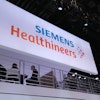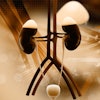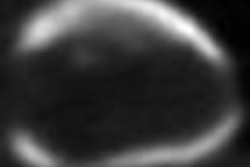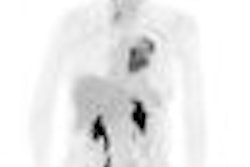TORONTO - SPECT myocardial perfusion imaging (MPI) using a high-efficiency gamma camera turned in good results compared to the gold standard of invasive coronary angiography, according to a presentation this week at the SNM annual meeting.
Researchers from Cedars-Sinai Medical Center in Los Angeles tested a high-efficiency gamma camera (D-SPECT, Spectrum Dynamics, Caesarea, Israel) designed to perform cardiac studies faster than existing models. The system received 510(k) clearance from the U.S. Food and Drug Administration (FDA) in late 2006, and U.S. shipments began in 2007.
The camera uses nine collimated detector columns arranged in a curved configuration to conform to the shape of the left side of a patient's chest. The system's cadmium zinc telluride-based digital detector array remains still while the patient sits on the system's chair at a 45° angle, and the detector array rotates around the patient.
At Cedars-Sinai, a research team led by Dr. Xingping Kang wanted to see how the system would perform in a community setting. Previous research has confirmed that the unit's performance is comparable to conventional SPECT MPI, but the researchers wanted to compare it to the gold standard for cardiac imaging.
The group examined 83 patients with no known coronary artery disease who underwent invasive coronary angiography within three months of rest/stress MPI with the high-efficiency SPECT unit. Patients were classified as having normal or abnormal perfusion using two means: visual analysis and quantification based on total perfusion deficit (TPD), with abnormality defined as stress TPD ≥ 5% of total myocardium.
Results were presented based on degree of stenosis at two levels of severity, ≥ 50% diameter stenosis and ≥ 70% diameter stenosis, and also interpreted based on receiver operator characteristics (ROC) analysis.
Accuracy of high-efficiency SPECT MPI
|
Kang concluded by stating that according to the results, SPECT MPI with the high-efficiency gamma camera compares well to invasive coronary angiography in the overall detection of coronary artery disease.
Related Reading
Single-photon cardiac camera greatly reduces imaging time, April 10, 2009
Copyright © 2009 AuntMinnie.com




















